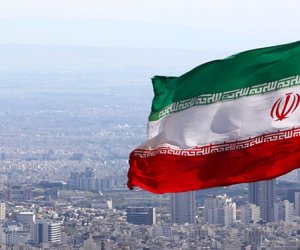Tracking a trail of historical obliteration

ISIS is continuing to bulldoze its way through the cultural heritage of Iraq and Syria, with the ancient Assyrian capital of Khorsabad apparently the extremist group's latest archaeological victim.
Iraq's Ministry of Tourism and Antiquities said Monday it had received reports that Khorsabad had been destroyed.
"We have warned before and we warn again that those gangs and their sick Takfiri ideology will continue to destroy and steal artifacts as long as there is no strong deterrent," the ministry said in a statement. (A Takfiri is a Muslim who accuses another Muslim of apostasy.)
Here's a roundup of some of the mayhem and destruction ISIS has wrought upon antiquity:
Khorsabad
Where: Khorsabad is about 19 kilometers (12 miles) northeast of Mosul in northeastern Iraq.
What: Assyrian King Sargon II built a palace at Khorsabad between 717 and 706 B.C., according to the Oriental Institute at Chicago University, which helped excavate the site during the last century.
Khorsabad, one of three cities that served as a capital during the empire's reign, was abandoned after Sargon's death in 705 B.C., the institute said.
Why it's significant: The Oriental Institute says "Khorsabad is unusual among the Assyrian palaces because of its stylistic innovations, the preservation of paint on its reliefs, and the extensive ancient written documentation concerning the organization of the building project. "
Carved stone reliefs from the site are held in Baghdad, Chicago, Paris and Britain, it said.
Nimrud
Last week, the Iraqi Ministry of Tourism and Antiquities said ISIS had bulldozed the site of another ancient Assyrian capital, Nimrud.
"ISIS continues to defy the will of the world and the feelings of humanity," the ministry said in a statement. "They violated the ancient city of Nimrud and bulldozed its ancient ruins."
U.S. Secretary of State John Kerry said he was "disturbed" by the reports.
"These depraved acts are an assault on the heritage of the Iraqi and Syrian people by an organization with a bankrupt and toxic ideology," Kerry said in a statement.
"The Iraqi government recently nominated Nimrud to be placed on UNESCO's list of world heritage sites. In contrast, ISIL's twisted goal is clear: to eviscerate a culture and rewrite history in its own brutal image."
Where: Nimrud lies about 30 kilometers (19 miles) south of Mosul in northern Iraq.
What: Nimrud, first known as Khalka, was a city in the Assyrian kingdom, which flourished between 900 and 612 B.C.
Why it's significant: UNESCO says Nimrud's "frescoes and works are celebrated around the world and revered in literature and sacred texts."
Mark Altaweel, professor of archeology at University College London, told CNN's Nic Robertson last week that Nimrud was a large site, the full potential of which had not been uncovered.
As the first Assyrian capital, it accumulated huge amounts of wealth, Altaweel said, and many of the objects found there were very rare and made from highly precious materials.
"I would describe Nimrud as one of the really unique archaeological sites in the entire ancient Near East," he said. "Nimrud is the capital of the first empire in this long series of empires that have profound significance in the way this region develops and ultimately how it affects our own society."
(CNN)
ANN.Az
Latest news 
Business
17:05
World
16:30
Society
15:30
Political News
14:35
Political News
14:30




































 Photo
Photo 



 Video
Video 

